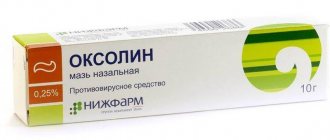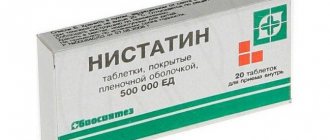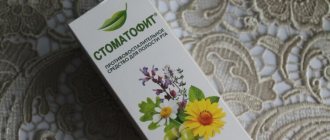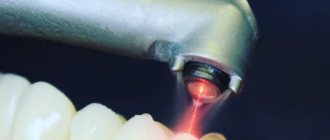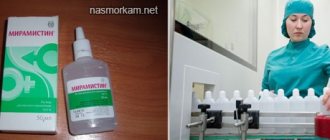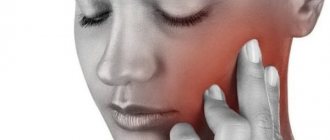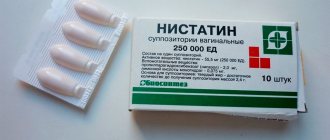Urogenital candidiasis is quite often registered in women and is a pressing problem in gynecology. To date, a significant number of antifungal drugs have been developed, both for systemic and local use, however, the complex drug Miramistin can also be used against thrush. This cannot be said to be a panacea, but in combination with other medications, the product in question has a pretty good effect.
Can Miramistin be used against candidiasis?
As you know, genital candidiasis is caused by a special strain of yeast - Candida albicans.
The disease most often occurs in an acute form and is accompanied by typical manifestations in the form of copious thick whitish discharge, intense itching of the external organs of the reproductive system and pain at the end of urination. According to its properties and official instructions, the spectrum of effects of this drug extends not only to bacteria and viruses, but also to yeast fungi. Therefore, gynecologists often prescribe Miramistin for thrush in women.
The presence of three dosage forms (ointment, spray and solution) allows for external treatment of affected areas of genital skin and douching, in which the medicinal substance enters directly into the vaginal cavity.
Indications and side effects
The instructions for use of Miramistin state that the drug is used for the treatment and prevention of diseases of the genitourinary system in men and women. The medicine does not provoke irritation and helps to stop inflammatory processes of any etiology.
Indications for use:
- Pathologies of the genitourinary system;
- Inflammation of the urethral canal;
- Inflammation of the prostate gland;
- Balanitis, urethritis, urethroprostatitis;
- Candidiasis of the mucous membranes.
The solution has found wide use not only in urological, but also surgical, gynecological, ophthalmological (they use a product based on miramistin - Okomistin), pediatric, dental and ENT practice.
What are the contraindications for use? Do not use the drug if you are hypersensitive to the active substance. In other cases, use is allowed, even in the presence of serious chronic diseases, during pregnancy, and breastfeeding.
Miramistin has extremely rare side effects. Some people note a slight burning sensation after use, but it goes away on its own within five minutes. A likely negative consequence may include an allergic reaction if the patient is intolerant to miramistin.
The solution is used as a prophylaxis against sexually transmitted diseases:
- Chlamydia, ureaplasmosis, mycoplasmosis.
- Gonorrhea, syphilis, fungal infections.
It is recommended to use Miramistin for intimate hygiene after unprotected sexual intercourse to prevent the development of sexually transmitted diseases. Overdose of the drug has not been registered.
Properties and features of the product
Miramistin belongs to the group of antiseptics, and also has antimicrobial, anti-inflammatory and local immunostimulating effects.
It has a detrimental effect on many pathogenic and opportunistic microorganisms:
- Bacteria (mostly gram-positive, such as staphylo- and streptococci, and gram-negative - Escherichia coli, Klebsiella, Pseudomonas aeruginosis, etc.).
- Protozoa.
- Viruses, including herpes viruses and HIV.
- Fungi (yeast-like, dermatophytes, penicillin, aspergillus, etc.).
The mechanism of action is that the active substance of the drug (benzyldimethylpropylammonium chloride monohydrate) destroys the outer wall of microorganisms, leading to their rapid death. The local immunostimulating effect is based on the activation of phagocytosis.
In addition, Miramistin has the following positive effects for candidiasis and other diseases:
- Accelerates the repair of damaged cells and tissues.
- Enhances the performance of cells of the reticuloendothelial system (macrophages and phagocytes).
- Absorbs purulent exudate and promotes the formation of a dry crust.
- Prevents the layering of bacterial flora on the burn surface and wounds.
- Activates the absorption function of macrophages.
- Stops inflammation around the lesion without disturbing the formed epithelium around the wound surface.
Miramistin is available (in addition to the spray) in two dosage forms: as a 0.5% ointment and a 0.01% solution in a convenient plastic bottle equipped with a sprayer or a special urological applicator, 500, 150 and 50 ml. In addition to the active substance, the solution contains purified water, and the ointment additionally contains macrogol, propylene glycol, water and proxanol.
Antiseptic properties of the drug
Pharmacists produce Miramistin in the form of an ointment, spray and solution for topical use. The medicine is poured into polyethylene bottles equipped with a spray nozzle or a special pump. The volume for home use of the drug is 50, 100, 150 and 200 ml. In hospital settings, doctors use 500 ml containers.
The instructions for use of Miramistin state that the active substance is a broad-spectrum antiseptic. It effectively eliminates gram-positive and gram-negative bacteria, antibiotic-resistant microbes, aerobic and anaerobic infections, as well as multidrug-resistant hospital strains.
In gynecology, Miramistin is used due to its antifungal properties. The drug has a detrimental effect on ascomycetes of the Aspergillus and Penicillium families, dermatophytes, strains resistant to chemotherapy, as well as yeast and yeast-like fungi, the activity of which leads to vaginal dysbiosis and thrush. The product quickly relieves burning and itching and suppresses the activity of candida fungi. Thus, the pathological process in the woman’s vagina is extinguished.
When treating thrush with Miramistin, the active component acts locally. It does not enter the body because it is not absorbed by the skin and mucous tissues and is not transmitted to the systemic bloodstream.
How to use Miramistin for thrush in women?
There are different variations on how to use Miramistin for thrush. This may include douching, washing with a solution, inserting tampons, or treating the skin with ointment.
Douching
To perform the procedure, a woman will need a douche bulb or Esmarch mug and a ready-made solution of the drug. You can use either pure or a 1:1 solution diluted with water, which is poured into a container in a volume of 10 ml. Next, the woman needs to take a comfortable position - lying on her back, with her legs apart. The tip of the bulb is inserted into the “vestibule” with gentle movements and the solution is injected into the vaginal cavity. After the procedure, you should lie down for at least half an hour.
Since the bottles with the solution come with either an applicator or a sprayer, you can do without additional funds. The tip of the nebulizer is inserted into the vagina like a pear, after which the bottle is compressed and the medicine gets inside. Before douching, you can treat the skin of the genital organs with a solution of chamomile or calendula, which also effectively relieves the manifestations of thrush.
In the first and second cases, treatment of thrush with Miramistin involves daily irrigation of the vaginal cavity for 7 days. As a rule, a positive effect is observed after 1-2 days of use.
Miramistin during pregnancy from thrush
Miramistin is also allowed during pregnancy against thrush.
Clinical trials have proven that the drug does not have an embryotoxic or teratogenic effect on the fetus and the body of the expectant mother. Since douching is undesirable during pregnancy, you can use ordinary hygienic tampons. First, they are dipped in a medicinal solution (25-50 ml), and then inserted into the vagina once a day for a couple of hours. The recommended course of treatment is 6-7 days.
Using the ointment, applications are made in the form of gauze bandages. The frequency of application is 2 times a day, and the duration is from 5 to 7 days.
Side effects and contraindications
Before using any drug, it is important to remember that you must strictly follow the instructions or recommendations of your doctor.
Miramistin should not be used for thrush in women:
- During menopause, since there is a risk of injury to the already dry and thinned vaginal mucosa.
- Before a scheduled examination by a gynecologist, otherwise the examination results may be unreliable.
- For the period of menstruation, as there is a high risk of infection spreading deeper.
No adverse reactions to the drug were identified as such. Occasionally, after administration of the solution, a slight burning sensation may appear, which disappears on its own after 10-15 seconds and does not require discontinuation of the course of therapy. In rare cases, a local allergic reaction may occur in the form of skin hyperemia and varying intensity of itching. In this case, it is advisable to consult with your doctor. You should also know that soap solutions significantly reduce the activity of Miramistin.
Rules for using the product
The nozzle makes the product easy to use. To treat thrush at home with Miramistin, women are recommended to douche with the drug for 5–7 days. It is more convenient to do the manipulation while lying down, carefully inserting the nozzle into the vagina and injecting no more than 10 ml of solution in one session. To prevent candidiasis, a sexual partner (husband, boyfriend, just a friend for intimate relationships) can inject the solution through a nozzle into the urethra while standing. At first, Miramistin causes a burning sensation, but you need to endure it, because the unpleasant sensation quickly passes. Irrigation must be done daily, as recommended by the doctor.
Nursing women and expectant mothers suffering from thrush can safely use Miramistin during pregnancy. During thorough studies of the drug, scientists found that the antiseptic does not cause a teratogenic or toxic effect for the baby. This means that the treatment of the mother will be safe for the pregnant fetus or baby. However, experts advise pregnant women to be careful when treating vaginal candidiasis and not to overuse the medicine. Otherwise, mothers may experience allergic reactions to the medication.
Reviews about the treatment of thrush with Miramistin
You can make sure that Miramistin really helps against thrush by looking at the positive and detailed reviews from women who have tried this medicine on themselves.
Ekaterina, 33 years old. When I first developed thrush, although I did not immediately realize what had happened, I began to worry when the itching became unbearable and immediately turned to a gynecologist. Based on a smear, she diagnosed vulvovaginal candidiasis and prescribed a solution with Miramistin. After three days of therapy, the burning and itching disappeared, and then the discharge stopped. The general course was 7 days, after which the smear for fungi was negative.
Elena, 22 years old. Thrush started after using new sanitary pads with fragrance for a week. First, the genital area turned red, and then itching and unpleasant copious discharge appeared. On the doctor’s recommendation, I made my own tampons with Miramistin solution, which I inserted into the vaginal cavity for two hours. A week later, during a second consultation, the doctor said that there was no more thrush.
Irina, 40 years old. Previously, my candidiasis worsened at least 4 times a year, so I treated it almost continuously. At the consultation, the gynecologist advised me to go on a diet, in particular, to give up all flour and chocolate, take a course of vitamins and do douching with Miramistin for a week. Complex therapy has yielded positive results, since there has been no candidiasis for two years now.
Valeria, 20 years old. I often get thrush due to my immunodeficiency, so I always have Miramistin in my medicine cabinet. I use it immediately when symptoms such as itching and whitish discharge appear. I believe that Miramistin is the most effective drug for candidiasis, since in my case it helps from the very first days. I recommend it to everyone, although everything may be individual.
Prevention
To properly use Miramistin to prevent possible future infectious diseases, you should follow the norm. It is inserted into the urethra using a urethral nozzle;
- For men – 2-3 ml;
- For women – 1-2 ml + 7-8 ml in the vagina for a few minutes.
The procedure is carried out no later than 2 hours after completion of sexual intercourse. After administering the product, you should not go to the toilet for 2 hours.
Was this article useful to you??
Candidiasis is an infectious disease caused by microscopic yeast-like fungi of the genus Candida that affects the skin and mucous membranes. Fungi live on the skin of a healthy person, and are also present in the microflora of the intestines, mouth, vagina, etc. The disease, as a rule, is caused not by the actual presence of fungi of the genus Candida, but by their reproduction in large quantities and/or the entry of highly pathogenic strains into the human body.
There are more than 80 species of fungi of the genus Candida, but about 10 species are clinically significant. So what contributes to the rapid proliferation of fungi of the genus Candida? There can be many reasons, but the main ones are a decrease in local or general, as well as a change in the composition of the microflora (dysbacteriosis). Dysbacteriosis, in turn, can be caused by any disease or long-term use of medications, such as antibiotics or glucocorticoids.
In addition, there are other factors that contribute to the development of . For example, such as unfavorable production conditions, prolonged contact with water, work in conditions of high temperature and humidity, etc. For example, a higher risk of skin candidiasis is observed among workers in the wine industry, bakery industry and confectionery workers.
Most often, candidiasis affects the superficial layers of the skin and mucous membranes, but in immunodeficiency states, damage to internal organs is possible.
Although candidiasis can be transmitted sexually, most cases of candidiasis are not associated with sexual contact.
Clinical forms of candidiasis are distinguished depending on the location of the infection.
, as a rule, is localized in large folds of skin or on the palms. But there are cases (mainly in children) when candidiasis affects the skin outside the folds. In the affected areas, small bubbles appear on the skin, which, when bursting, leave behind. Foci of inflammation merge with each other and form large areas of dark red color. If candidiasis affects the palms, they take on the appearance of being burned. A very thin layer of skin remains on the affected areas. It quickly dries out, becomes cracked and becomes inflamed. In this case, the patient experiences severe itching on the affected areas of the skin. Quite often, skin candidiasis periodically worsens and then subsides, that is, it has a recurrent nature. Relapses of the disease occur most often in spring and autumn and can be observed for many years.
This type of candidiasis is more common in newborns. The cheeks, pharynx, gums and tongue are covered with a whitish coating, reminiscent of cottage cheese. Sometimes the affected area extends deeper - to the pharynx, tonsils and even to the esophagus. Thrush is very painful. If treatment for candidiasis of the oral mucosa is started in a timely manner, it usually does not pose any danger. In addition to newborns, the risk group includes the elderly and those infected. This is explained by the fact that these categories of people have reduced body resistance to infection.
This type of candidiasis is one of the forms. If for some reason the number of beneficial ones in the intestines is reduced, their place is taken by rapidly multiplying candida. This is manifested by pain (discomfort) in the abdomen, flatulence, and diarrhea.
Characterized by damage to the foreskin and glans penis.
Its symptom is aching pain in the epigastric region that appears after eating. Gastric candidiasis most often develops against the background of atrophic gastritis.
Its main symptoms are pain (difficulty) when swallowing, a feeling of discomfort behind the sternum when swallowing. Esophageal candidiasis most often occurs in chronic diseases of the esophagus and after burns.
The principle of action and benefits of Miramistin
Due to its properties, the drug has a number of advantages over other drugs against fungal diseases:
- Has a strong antibacterial effect
- Used in various fields of medicine
- Very rarely causes allergic reactions, makes it possible to treat fungal diseases in men, women, and newborns
- It is an effective antiseptic and has anti-inflammatory properties.
- It is very convenient to use the medicine against thrush: various forms of the medicine allow you to douche, apply to the affected areas, and do local irrigation
- Miramistin is a non-toxic drug
- Dispensed without a doctor's prescription.
READ MORE: How to get rid of thrush with baking soda
Contraindications and analogues
Chlorhexidine has similar properties and composition. However, it has a bitter taste and is irritating to the mucous membranes. Chlorhexidine against thrush is not recommended for use in children.
Thrush is a very common condition that can affect both men and women. Treatment of the fungus must be carried out on both partners at the same time. Despite the effectiveness of the drug, the disease may experience relapses.
Side effects, contraindications, drug compatibility
Since the drug has only a local effect and is not absorbed into the blood, it is almost always permissible to use Miramistin against thrush. The only contraindication for its use is individual hypersensitivity. Since the solution contains only the active substance and water, the frequency of allergies to it is quite low.
When Miramistin is used for thrush in the form of vaginal tampons, discomfort from this method of administering the drug is possible. But it does not irritate the mucous membrane, so such use does not pose a danger. Tampons with Miramistin should not be used during menstruation; you should wait until the end.
"Miramistin" is intended for external use only, it should not be taken orally, and the drug should not come into contact with the eyes.
Vials of medicine must be kept away from children and pets. There have been no cases of Miramistin poisoning or overdose. If the drug is accidentally swallowed, abdominal pain, vomiting or diarrhea may occur; if it gets into the eyes, burning, lacrimation, and temporary blurred vision may occur. In both cases, no special treatment measures are required.
How to treat the oral cavity in children under 3 years old
Babies and slightly older children cannot control some processes occurring in the body. Dr. Komarovsky advises adults to independently treat children’s oral cavity and rinse.
- Take 2 gauze, a glass of boiled water at room temperature, and an antiseptic.
- Wrap gauze around your finger and dip it in water.
- Carefully remove the plaque with a gauze swab.
- Throw away the old gauze and wrap a new piece around your finger.
- Moisten with an antiseptic or solution, wipe the mouth and tongue again.
A well-known auxiliary medication in the treatment of fungal infections is Miramistin. This medicine does not cause an allergic reaction or skin irritation, so it can be used to treat thrush in a child’s mouth.
The composition does not contain toxic substances and taking the drug is completely harmless, therefore Miramistin is considered the safest remedy for children with thrush. To treat infants, a spray is used that quickly heals wounds in the mouth and removes white plaque. You can wipe your mouth with Miramistin after feeding.
